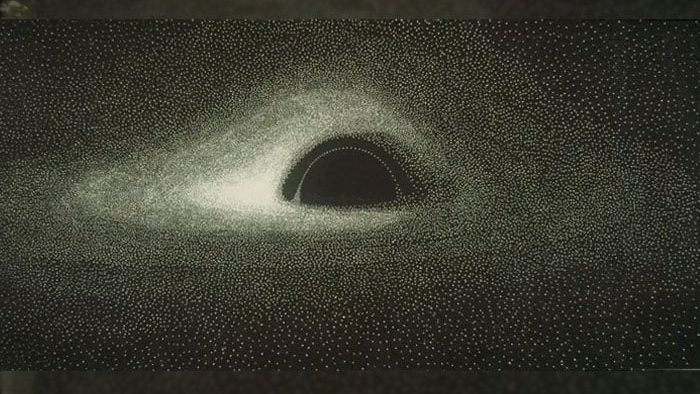Mind-bending image of a gigantic black hole produced by a machine for the first time

Since the early 20th century, black holes—one of the universe’s most mysterious objects—have captivated scientists. This fascination culminated in the historic 2019 publication of the first-ever image of a supermassive black hole at the center of galaxy M87, according to Snopes.
But even before this accomplishment, in 1979, French cosmologist Jean-Pierre Luminet used the gravity equations to mimic the appearance of black holes in an attempt to visualize them.
Special relativity, developed by Albert Einstein in 1905, established the foundation for our knowledge of how space and time relate to one another. Over the course of the following ten years, Einstein constructed his theory of general relativity, which eventually predicted the creation of black holes and described gravity as the bending of spacetime induced by large objects.
Luminet’s groundbreaking research required complex calculations to show how gravity affects light in the vicinity of a black hole. His simulation showed, in contrast to common assumptions, a little ring of light surrounding a darkish center.
Using a computer from the 1970s, Luminet generated a simulated image that hinted at a possible similarity to the supermassive black hole in M87.
In 2017, Shep Doeleman, an astronomer at Harvard, spearheaded a massive project that used telescopes all around the world to search the area around M87. The first true image of a black hole was revealed by the scientists after two years of data analysis, and it strikingly resembled Luminet’s decades-old computer-generated visualisation.

I am a dedicated student currently in my seventh semester, pursuing a degree in International Relations. Alongside my academic pursuits, I am actively engaged in the professional field as a content writer at the Rangeinn website.








